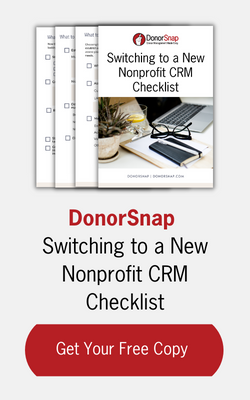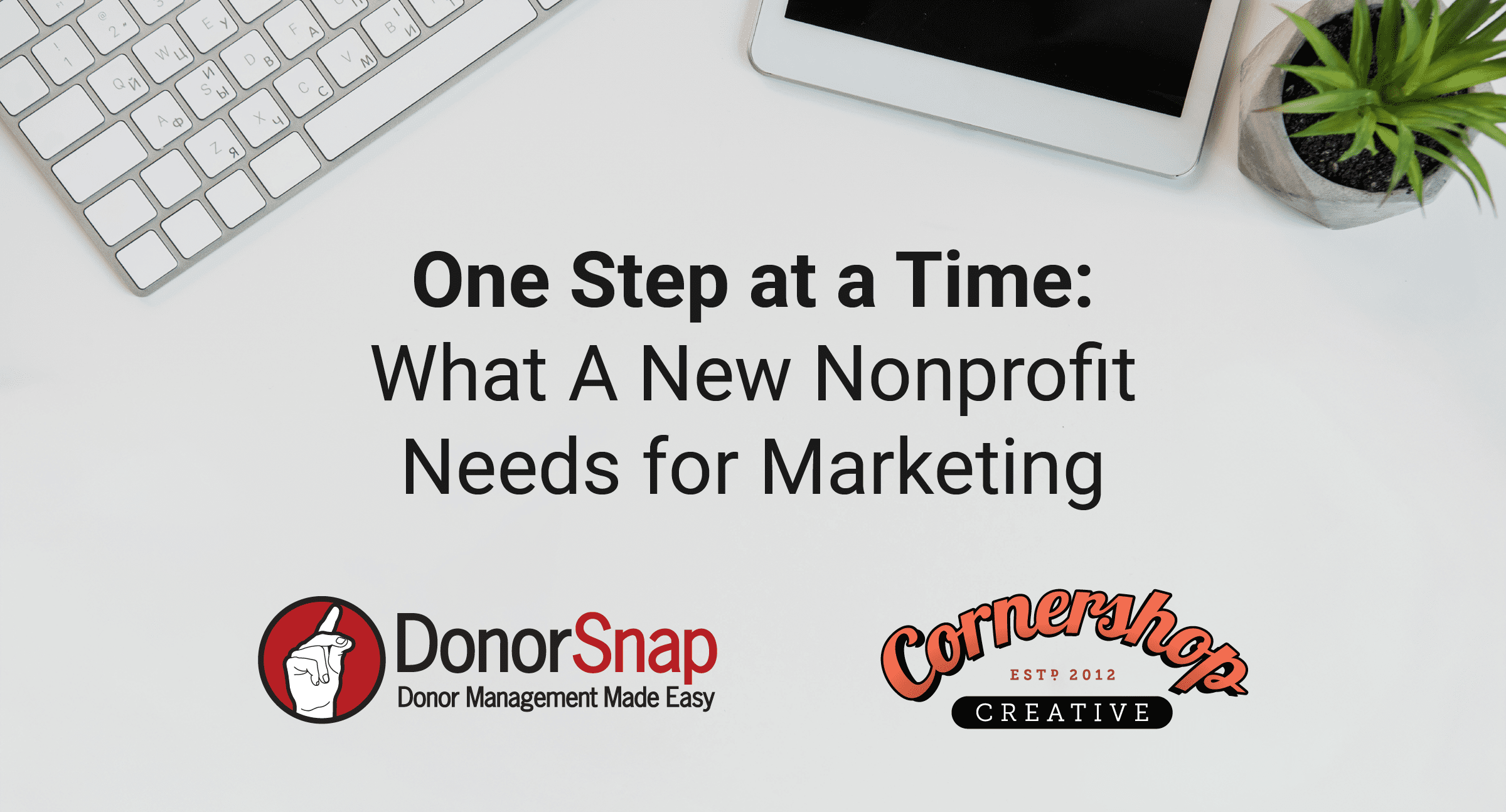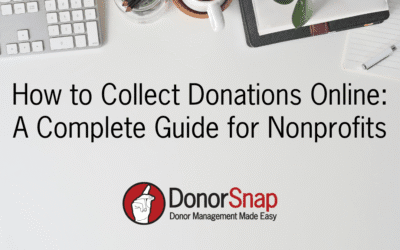Your nonprofit’s annual gala is just around the corner. Tables are selling, excitement is building, and your team is putting the finishing touches on what promises to be an inspiring evening. But here’s a question that many nonprofits overlook: What happens to all those new faces who attend your event as guests?
Events represent one of the most powerful opportunities for donor acquisition that nonprofits have at their disposal. Yet too many organizations treat events as isolated fundraising activities rather than strategic entry points into long-term donor stewardship. The truth is, every person who walks through your event doors is a potential lifelong supporter if you know how to cultivate them properly.
The cultivation of new donors is indeed a lengthy process, oftentimes up to 12 months for major donors. Nonprofits that master the art of post-event stewardship can see significantly higher donor retention rates and lifetime value. Let’s explore how to transform event attendees into committed supporters through strategic planning and the right technology tools.
Step 1: Start Strong with Strategic Registration
The donor cultivation journey begins long before your guests walk through the door. It starts with your registration process. This is your first opportunity to gather valuable intelligence and set the tone for future engagement.
Picture this scenario: Jane, a longtime supporter of your organization, receives your gala invitation via email. Inspired by your mission and excited to support your cause, she purchases a table and plans to bring six of her closest friends. While some of her guests are familiar with your organization, others have never donated before. This moment represents a golden opportunity for donor expansion.
When Jane completes her table purchase, she’s directed to a registration form where she provides information for all her guests. This is where event management software like EventSnap becomes invaluable. The platform allows you to customize registration fields to collect exactly the information your organization needs for effective follow-up. At minimum, you’ll want full names, email addresses, and contact preferences, but you can also gather additional insights like:
- Professional affiliations
- Areas of interest within your mission
- Communication preferences
- Meal choice
Pro tip: Don’t overwhelm guests with too many fields, you can always collect more data at a later date. Strike a balance that feels welcoming rather than intrusive.
All of this valuable attendee information now lives securely in your EventSnap system, ready to fuel your post-event cultivation strategy.
Step 2: Create Connection During Your Event
Nonprofit events are uniquely positioned to inspire and connect people to your cause in ways that direct mail or digital campaigns simply cannot match. The key is ensuring your event programming deliberately engages both longtime supporters and first-time attendees.
Successful cultivation-focused events share several characteristics:
Compelling storytelling: Weave authentic stories throughout your program that illustrate your impact. First-time attendees need to understand not just what you do, but why it matters and how their support creates change.
Interactive elements: Create opportunities for guests to engage with your mission beyond passive listening. This might include mission moments, impact displays, or brief volunteer spotlights that help newcomers envision their own involvement.
Strategic networking: Facilitate connections between longtime supporters and new attendees. Your established donors are often your best ambassadors for explaining why they’re passionate about your cause.
Clear next steps: Don’t leave guests wondering how they can get more involved. Provide clear, accessible ways for them to continue their engagement journey.
Remember, you’re not just hosting a fundraising event. You’re creating an experience that transforms interest into commitment.
Step 3: Leverage Technology for Quick Data Transfer
The magic happens after your event when you transform the inspiration guests felt into ongoing engagement. This is where the integration between EventSnap and DonorSnap becomes a game-changer for your organization.
Manual data entry is not only time-consuming but also prone to errors that can derail your cultivation efforts. EventSnap’s integration capabilities automatically sync all attendee data back into your DonorSnap database, where sophisticated linking tools help you:
- Identify and update existing donor records
- Create new donor profiles for first-time attendees
- Maintain data integrity across platforms
- Segment audiences based on engagement history
This seamless integration means your development team can focus on relationship building rather than administrative tasks, dramatically improving both efficiency and effectiveness of your cultivation efforts.
Step 4: Craft Meaningful Thank You Messages
Your first post-event communication sets the tone for all future interactions. Within 48 to 72 hours of your event, every attendee should receive a heartfelt thank you message, but not the same message.
Segmentation is crucial at this stage. Your longtime supporters and first-time attendees have different relationships with your organization and require different approaches:
For established donors: Express gratitude for their continued support and highlight how their involvement made the event successful. Reference specific moments from the evening and reinforce their importance to your mission.
For new attendees: Focus on welcome and inspiration. Thank them for sharing the evening with you, reference specific elements of your program that newcomers found compelling, and express excitement about the possibility of their future involvement.
DonorSnap’s segmentation capabilities make it simple to create targeted lists based on giving history, event attendance, and engagement levels, ensuring every message feels personal and relevant.
Step 5: Implement a Strategic Welcome Series
The thank you message is just the beginning. To effectively cultivate new donors, you need consistent, strategic touchpoints that gradually deepen their connection to your cause without overwhelming them.
DonorSnap’s automated task manager allows you to create sophisticated welcome series that nurture new prospects over time. A typical series might include:
Week 1: Welcome and orientation message introducing key programs and impact areas
Week 3: Impact story highlighting recent success made possible by donor support
Week 6: Volunteer opportunity invitation or behind-the-scenes content
Week 10: Educational content about your issue area or community need
Week 12: Invitation to a smaller, more intimate engagement opportunity
The key is maintaining consistent communication without being overwhelming. Space your messages strategically to stay top-of-mind while respecting your prospects’ inbox and attention.
Personalization amplifies impact: Use the information gathered during registration to tailor these messages. Reference their table host, recall moments from the event that resonated with newcomers, or connect them with volunteer opportunities that align with their professional skills or personal interests.
Step 6: Deepen Engagement Through Strategic Surveys
Once you’ve established initial rapport through your welcome series, consider deploying a thoughtful survey to gather deeper insights about your new prospects. This serves multiple purposes: it provides valuable data for future cultivation, demonstrates that you value their opinions, and creates another touchpoint for engagement.
Effective post-event surveys might ask:
- What aspect of the event was most inspiring or memorable?
- What originally drew them to support causes like yours?
- What additional information would help them better understand your impact?
- How do they prefer to stay connected with organizations they support?
- What volunteer opportunities might interest them?
Keep surveys brief (5 to 7 questions maximum) and always explain how their feedback will be used to improve their experience and your impact. You can easily create a survey with DonorSnap’s responsive forms tool and have the data link directly to your contact record for future use.
Step 7: Make Your Ask Strategically
Here’s a fundamental truth about fundraising: people rarely give unless asked. However, the timing and method of your ask can determine whether a prospect becomes a one-time donor or a lifelong supporter.
After 8 to 12 weeks of thoughtful cultivation, your new prospects should have a solid understanding of your mission, impact, and the role donors play in creating change. This is when you make your first solicitation, but approach it strategically:
Personalized outreach works best: While email can be effective for smaller gifts, phone calls or handwritten notes significantly increase response rates for major gift prospects. Use the relationship intelligence you’ve gathered to determine the most appropriate channel and message for each prospect.
Reference their event experience: Connect your ask back to the inspiration they felt at your event. Remind them of specific moments, stories, or connections that resonated with them personally.
Offer meaningful giving options: Present gift levels that feel accessible yet significant. Consider offering monthly giving options, which can feel more manageable for new donors while providing your organization with predictable revenue.
Provide clear impact statements: New donors want to understand exactly how their gift will be used. Provide specific, concrete examples of what their contribution will accomplish.
Step 8: Plan for Long-Term Stewardship Success
Converting event attendees into first-time donors is just the beginning. Your ultimate goal is transforming them into committed, long-term supporters who increase their giving over time and become advocates for your cause.
Effective long-term stewardship includes:
Regular impact reporting: Show donors the tangible results of their support through newsletters, impact reports, and exclusive updates. Learn more about impact reports here.
Meaningful recognition: Acknowledge donors in ways that feel personal and genuine, whether through handwritten notes, phone calls from beneficiaries, or special recognition events.
Continued engagement opportunities: Invite donors to volunteer, attend educational programs, or participate in advocacy efforts that deepen their connection to your mission.
Strategic upgrade requests: Gradually introduce opportunities for increased giving through special campaigns, capital projects, or major gift conversations.
Measuring Success and Optimizing Your Approach
To ensure your event-to-donor cultivation strategy delivers results, establish clear metrics and regularly assess your performance:
Track conversion rates: What percentage of event attendees become first-time donors within six months? How does this compare to other acquisition channels?
Monitor retention: Are event-acquired donors giving again in subsequent years? How do their retention rates compare to donors acquired through other methods?
Analyze lifetime value: Over time, do event-acquired donors give more, less, or comparable amounts to donors from other sources?
Survey satisfaction: Regularly ask recent donors about their cultivation experience. What resonated? What felt excessive or insufficient?
Use DonorSnap’s reporting capabilities to track these metrics and identify opportunities for improvement in your cultivation process.
Conclusion: Events as Strategic Investment in Future Growth
When approached strategically, nonprofit events become far more than single-evening fundraisers. They transform into powerful donor acquisition and cultivation tools that fuel long-term organizational growth and sustainability.
The integration of EventSnap and DonorSnap provides the technological foundation for this strategic approach, but success ultimately depends on your organization’s commitment to treating every event attendee as a potential lifelong supporter worthy of thoughtful cultivation.
By implementing the systematic approach outlined in this guide, you’ll not only increase your donor base but also build stronger, more meaningful relationships with supporters who are genuinely invested in your mission’s success. The result is a more sustainable funding model and a community of advocates who will champion your cause for years to come.
Remember, in nonprofit fundraising, the goal isn’t just to secure a gift. It’s to create a lasting partnership between your organization and supporters who believe deeply in the change you’re working to create. Events provide the perfect opportunity to plant those seeds of partnership, but only careful cultivation will help them grow into the robust relationships your mission deserves.
Ready to Transform Your Event Strategy? Let Technology Do the Heavy Lifting
Don’t let another event pass by without maximizing its donor cultivation potential. The difference between nonprofits that successfully convert attendees into lifelong supporters and those that struggle with retention often comes down to having the right systems in place.
With EventSnap and DonorSnap working together, you can:
- Seamlessly capture attendee data during registration
- Automatically sync event information into your donor database
- Create targeted cultivation campaigns based on event participation
- Track conversion rates from attendee to donor
- Build comprehensive donor profiles that inform future stewardship
Stop losing potential donors to manual processes and disconnected systems. Your next event could be the launching pad for hundreds of new donor relationships—if you have the right tools to nurture them.
Start building stronger donor relationships today. Book a Demo today.





